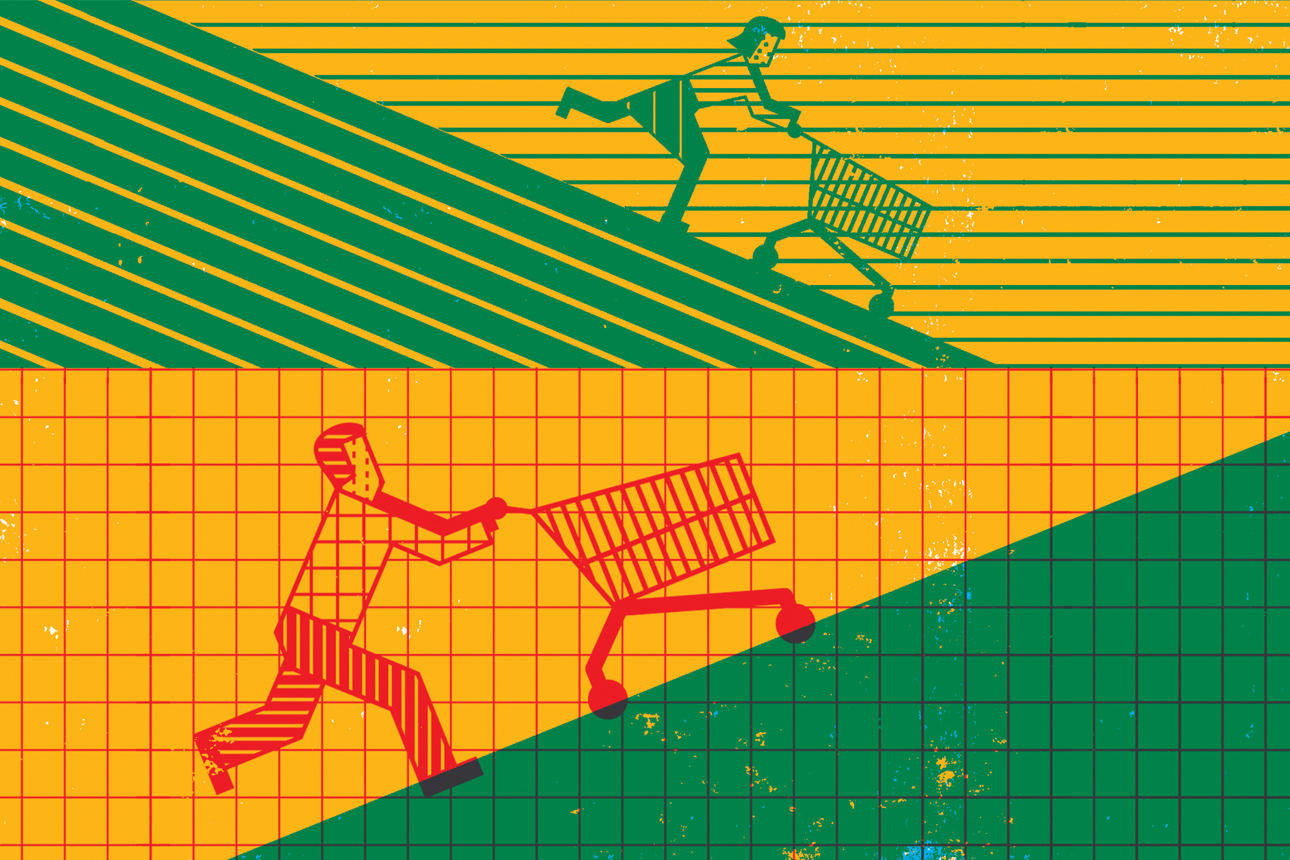Can Friction Improve Your Customers’ Experiences?
Many companies are on a quest to make online shopping as hassle-free as possible — but slowing down the purchase process can boost buyer satisfaction and loyalty.

Otto Dettmer/Ikon Images
Companies are on a mission to design purchase journeys that are as free of frustration and inconvenience as possible. “Friction kills the customer experience!” has become the conventional wisdom. This is thought to be particularly true when serving online shoppers, who are known to be less patient and have shorter attention spans; after all, competitor websites are but a few clicks away.
Most business leaders we know prioritize eliminating friction at the “moment of truth,” when displaying prices and taking payment, because beyond wanting to make life easier for eager customers, they fear giving customers reason to pause and reconsider their decisions. But as we will demonstrate, it is precisely in giving customers time to consider their purchase decisions when money is on the line that longer-term benefits and cost savings can accrue to the firm.
Friction and the Fickle Online Shopper
It’s easy to see why making shopping as seamless as possible is so urgent for e-commerce companies, when the average global cart abandonment rate for the last 12 months stood at a staggering 71.7% overall — 60.7% among people using desktop or laptop computers, 65.1% among those using tablets, and 77.4% for those using mobile phones.1 This last figure is perhaps the most troubling, given that mobile shopping in the U.S. grew by more than $200 billion in three years to reach $431 billion in 2022.2 According to the Baymard Institute, the average large e-commerce site could increase conversion by 35% by streamlining and simplifying the checkout process.3
Not surprisingly, e-commerce titans such as Amazon and Alibaba are investing heavily in quickly ushering consumers through their moments of truth by making prices and payments nearly invisible. Amazon pioneered one-click shopping back in 1999. Today, the attention is on its Just Walk Out technology, which blends computer vision, weight sensors, and deep learning to bring some of the ease of online shopping to physical stores: Patrons tap a credit card when entering a retail location to open a virtual cart, select items from the shelves, and leave without stopping at the cashier. At Alibaba, digital payments and self-service checkout stations are the norm across its 300 Freshippo supermarkets. People can even leverage its Alipay affiliate’s facial recognition technology to “pay by face.”
Companies with fewer resources are making changes to their purchase processes that are more incremental but no less significant.
References
1. “The Average Shopping Cart Abandonment Rate Globally Is 71.68%,” Dynamic Yield, accessed Sept. 22, 2023, https://marketing.dynamicyield.com/.
2. D. Coppola, “Retail M-Commerce Sales in the U.S. 2019-2025,” Statista, March 8, 2022, www.statista.com.
3. “49 Cart Abandonment Rate Statistics 2023,” Baymard Institute, accessed Sept. 18, 2023, https://baymard.com.
4. The “pain of paying” is a phenomenon documented in academic research on consumers. In fact, several studies show that paying money activates brain regions typically involved in the feeling of physical pain. For an example, see N. Mazar, H. Plassmann, N. Robitaille, et al., “Pain of Paying? A Metaphor Gone Literal: Evidence From Neural and Behavioral Science,” working paper 2901808, Rotman School of Management, Toronto, April 2017.
5. E. Sylvers, “Why It Takes More Than Money to Buy a Special-Edition Ferrari,” The Wall Street Journal, Sept. 27, 2016, www.wsj.com.
6. M. Schulz, D. Shepard, and P. Huang, “42% of Buy Now, Pay Later Users Have Made a Late Payment,” LendingTree, April 18, 2022, www.lendingtree.com; A. Andriotis, “Missed Payments, Rising Interest Rates Put ‘Buy Now, Pay Later’ to the Test,” The Wall Street Journal, June 1, 2022, www.wsj.com; and S. Galloway, “Buy Now. Pay (and Pay, and Pay, and Pay) Later,” Intelligencer, May 23, 2022, https://nymag.com.
7. T. Taggart, “5 Merchant Benefits of Buy Now, Pay Later,” Citcon, May 18, 2022, https://citcon.com; and J. Gourville and D. Soman, “Pricing and the Psychology of Consumption,” Harvard Business Review 80, no. 9 (September 2002): 90-96.
8. P. Kavilanz, “Just Keep Your Returns: Stores Weigh Paying You Not to Bring Back Unwanted Items,” CNN Business, June 26, 2022, www.cnn.com.
9. “Retail Returns Increased to $761 Billion in 2021 as a Result of Overall Sales Growth,” National Retail Federation, Jan. 25, 2022, https://nrf.com.
10. J. Schiffer, “The Unsustainable Cost of Free Returns,” Vogue Business, July 30, 2019, www.voguebusiness.com.
11. U.R. Karmarkar, B. Shiv, and B. Knutson, “Cost Conscious? The Neural and Behavioral Impact of Price Primacy on Decision Making,” Journal of Marketing Research 52, no. 4 (August 2015): 467-481.
12. L. Leachman and D. Scheibenreif, “Using Technology to Create a Better Customer Experience,” Harvard Business Review, March 17, 2023, https://hbr.org.
13. Z. Carmon, K. Wertenbroch, and M. Zeelenberg, “Option Attachment: When Deliberating Makes Choosing Feel like Losing,” Journal of Consumer Research 30, no. 1 (February 2003): 15-29.
14. S. Magids, A. Zorfas, and D. Leemon, “The New Science of Customer Emotions,” Harvard Business Review 93, no. 11 (November 2015): 66-76.
15. M.I. Norton, D. Mochon, and D. Ariely, “The Ikea Effect: When Labor Leads to Love,” Journal of Consumer Psychology 22, no. 3 (July 2012): 453-460.
16. M. Bertini, J. von Schuckmann, and A. Kronrod, “Talking to Your Customers About Prices,” Harvard Business Review, March 31, 2022, https://hbr.org.
17. L. Kannenberg, “Social Spotlight: REI’s #OptOutside and How a Campaign Becomes a Movement,” Sprout Social, accessed Aug. 11, 2023, https://sproutsocial.com.
18. J. Peiser, “The Age of Free Online Returns Is Ending,” The Washington Post, Dec. 9, 2022, www.washingtonpost.com.
